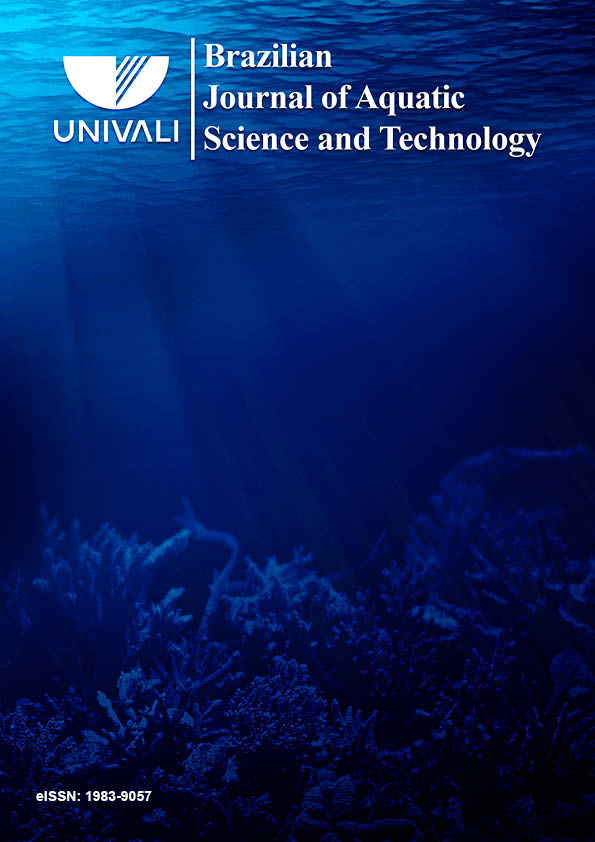Dieta da Gurijuba - Sciades parkeri - Desembarcada pelas pescarias artesanais de larga escala da costa norte do Brasil
DOI:
https://doi.org/10.14210/bjast.v20n1.7354Abstract
Sciades parkeri é um peixe marinho/estuarino conhecido popularmente como gurijuba. Para o estudo da dieta foram coletadas amostras bimestrais, na costa do Amapá, entre setembro de 2011 e dezembro de 2012. Em laboratório, os estômagos foram removidos, pesados e seus conteúdos gástricos foram analisados com auxílio de estereomicroscópio. A dieta foi avaliada a partir de métodos de frequência de ocorrência, índice de análise volumétrica e índice de importância alimentar. Foram analisados 189 estômagos; destes, 139 continham alimentos, 25 continham sedimento, 25 estavam vazios. Os itens alimentares principais foram fragmentos de crustáceos (n=60) peixes (n=33), Cycloplax pinnotheroides (Brachyura) (n=22), Os itens que apresentara as maiores frequências de ocorrência e índice de importância alimentar tanto no período chuvoso quanto no seco foram fragmentos de crustáceos (chuvoso Fi=38,64% e AIi= 65,35% e seco Fi = 48,15% e AIi= 67,76%) e fragmentos de peixes (chuvoso Fi=20,45% e AIi= 19,89% e seco Fi = 27,78% e AIi= 23,45%). As análises indicaram que a S. parkeri é uma espécie essencialmente carnívora.
Downloads
Published
Issue
Section
License
Authors who publish with this journal agree to the following terms:
1. Authors retain copyright and grant the journal right of first publication with the work simultaneously licensed under a Creative Commons Attribution License that allows others to share the work with an acknowledgement of the work's authorship and initial publication in this journal.
2. Authors are able to enter into separate, additional contractual arrangements for the non-exclusive distribution of the journal's published version of the work (e.g., post it to an institutional repository or publish it in a book), with an acknowledgement of its initial publication in this journal.
3. Authors are permitted and encouraged to post their work online (e.g., in institutional repositories or on their website) prior to and during the submission process, as it can lead to productive exchanges, as well as earlier and greater citation of published work (See The Effect of Open Access).

